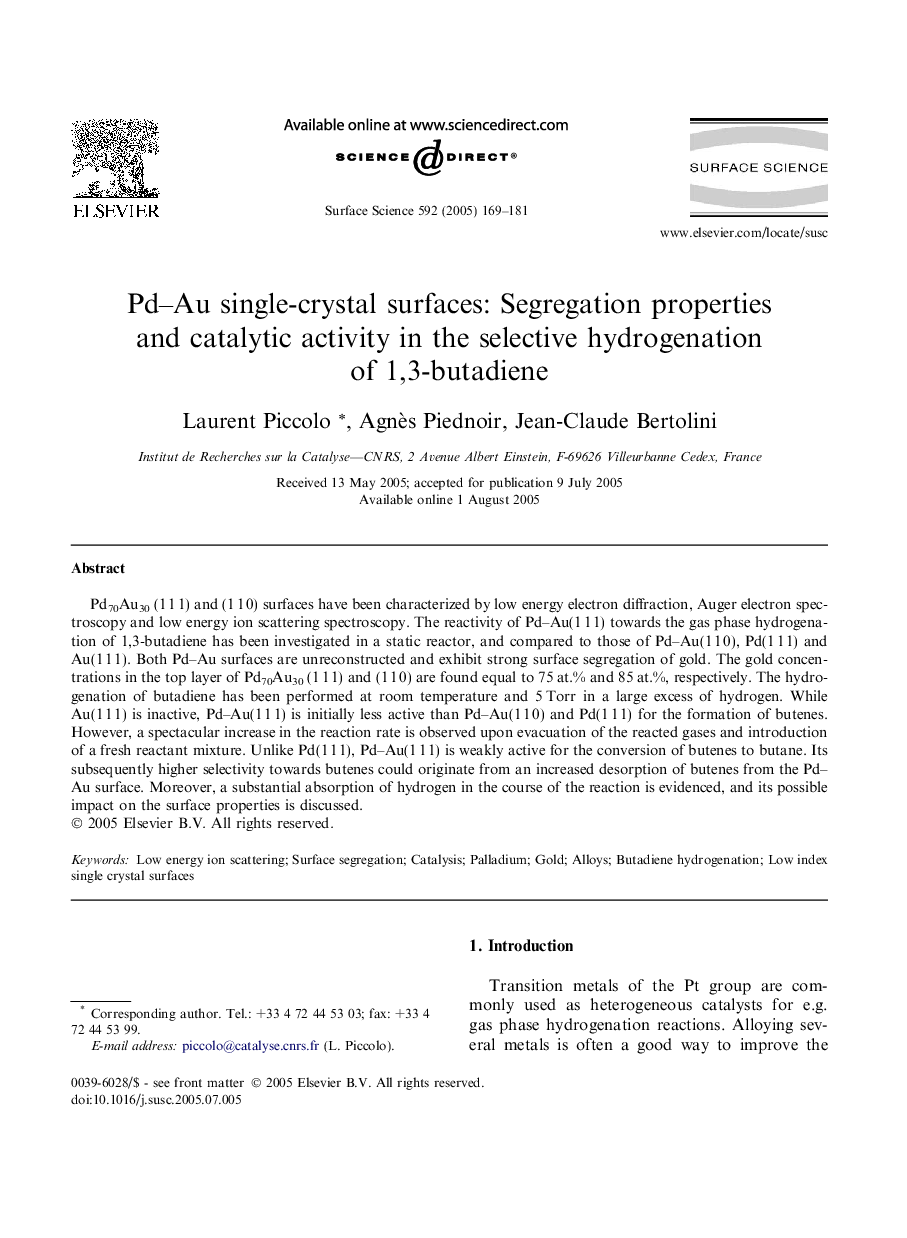| Article ID | Journal | Published Year | Pages | File Type |
|---|---|---|---|---|
| 9594552 | Surface Science | 2005 | 13 Pages |
Abstract
Pd70Au30 (1Â 1Â 1) and (1Â 1Â 0) surfaces have been characterized by low energy electron diffraction, Auger electron spectroscopy and low energy ion scattering spectroscopy. The reactivity of Pd-Au(1Â 1Â 1) towards the gas phase hydrogenation of 1,3-butadiene has been investigated in a static reactor, and compared to those of Pd-Au(1Â 1Â 0), Pd(1Â 1Â 1) and Au(1Â 1Â 1). Both Pd-Au surfaces are unreconstructed and exhibit strong surface segregation of gold. The gold concentrations in the top layer of Pd70Au30 (1Â 1Â 1) and (1Â 1Â 0) are found equal to 75Â at.% and 85Â at.%, respectively. The hydrogenation of butadiene has been performed at room temperature and 5Â Torr in a large excess of hydrogen. While Au(1Â 1Â 1) is inactive, Pd-Au(1Â 1Â 1) is initially less active than Pd-Au(1Â 1Â 0) and Pd(1Â 1Â 1) for the formation of butenes. However, a spectacular increase in the reaction rate is observed upon evacuation of the reacted gases and introduction of a fresh reactant mixture. Unlike Pd(1Â 1Â 1), Pd-Au(1Â 1Â 1) is weakly active for the conversion of butenes to butane. Its subsequently higher selectivity towards butenes could originate from an increased desorption of butenes from the Pd-Au surface. Moreover, a substantial absorption of hydrogen in the course of the reaction is evidenced, and its possible impact on the surface properties is discussed.
Keywords
Related Topics
Physical Sciences and Engineering
Chemistry
Physical and Theoretical Chemistry
Authors
Laurent Piccolo, Agnès Piednoir, Jean-Claude Bertolini,
